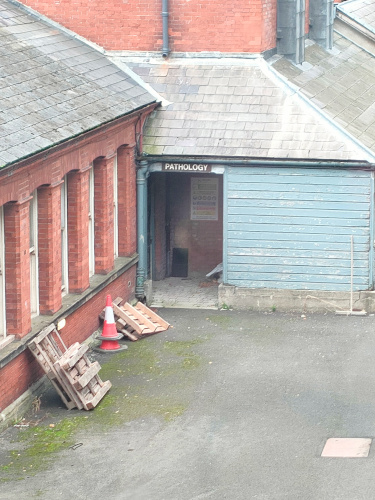Over the last few years, I’ve had a gradual realization that has honestly made me pretty worried about the future of humanity. I’ve been an atheist for over a decade now, and in that time, I definitely went through a phase of anger at the degree to which our world is governed by magical thinking. At the same time, knowing and respecting a large number of religious people, I knew that most of them are perfectly rational people whose day to day thoughts and actions fit with a naturalistic understanding of the world. Hell, I generally tried to make decisions rationally, though I would pray over/meditate on important or difficult ones.
I also grew up learning about strange and horrible things “from the past”, like witch hunts, which happened because of superstition, and possibly contaminated grain? But all of that was in the past. We know better, now, and those areas that still have people murdered for being “witches”, well, they’re just backwards and primitive, and… Boy, when you lay it all out it starts to sound pretty bad, doesn’t it? Almost as if I grew up within a society constructed around white supremacy, and bought into a fair amount of it, particularly about places to which I had never been. I bought the narrative of Africa as a poor continent, that was strangely slow to develop technologically, and they weren’t doing education well enough, so superstition filled in the gaps in people’s understanding, and that led to stuff like problems being blamed on witches. That, and a dim awareness of religious and spiritual practices outside my own experience as a white, middle-class, Quaker kid from New England.
As with most misinformation and misunderstanding, there are fragments of truth there. I still believe that magical/religious thinking leads people in bad directions, and to bad conclusions, it’s just that there are a myriad of other ideas and ideologies that do the same, and are often far more destructive in the process. White supremacy is a good example, not just in its most blatant and bloodthirsty forms, but also in the more subtle ways it excuses the abuses of the rich and powerful, and masks the real causes of societal problems. In fact, bigotry in general seems to operate very like a magical belief. The beliefs that drive it tend to have connections to a bigot’s sense of self, and so they will tend to cling to those beliefs even in the face of falsifying evidence.
Through that lens, we can see that the social dynamics leading to things like witch hunts have changed in appearance, but they have not gone away. The Renegade Cut video below does a good job of breaking this down, but think about things like the Satanic Panic of the 1980s, where lives were destroyed over accusations of, well, practicing dark magics and human sacrifice. Think of current moral panics.
The horrifying reality is that this stuff never went away. Not in poor countries, and not in rich countries. Some of us just managed to convince ourselves that our society had gotten past all that. We haven’t, any more than we’ve gotten past white supremacy, and that fact has me worried about our capacity to actually change things for the better. I think we can do that, but it seems that as a species, we’re far too good at convincing ourselves that the mere passage of time has moved us “forward”. It seems that this is a problem that will not go away by itself.
If you like the content of this blog, please share it around. If you like the blog and you have the means, please consider joining my lovely patrons in paying for the work that goes into it. Due to my immigration status, I’m currently prohibited from conventional wage labor, so for the next couple years at least this is going to be my only source of income. You can sign up for as little as $1 per month (though more is obviously welcome), to help us make ends meet – every little bit counts!








